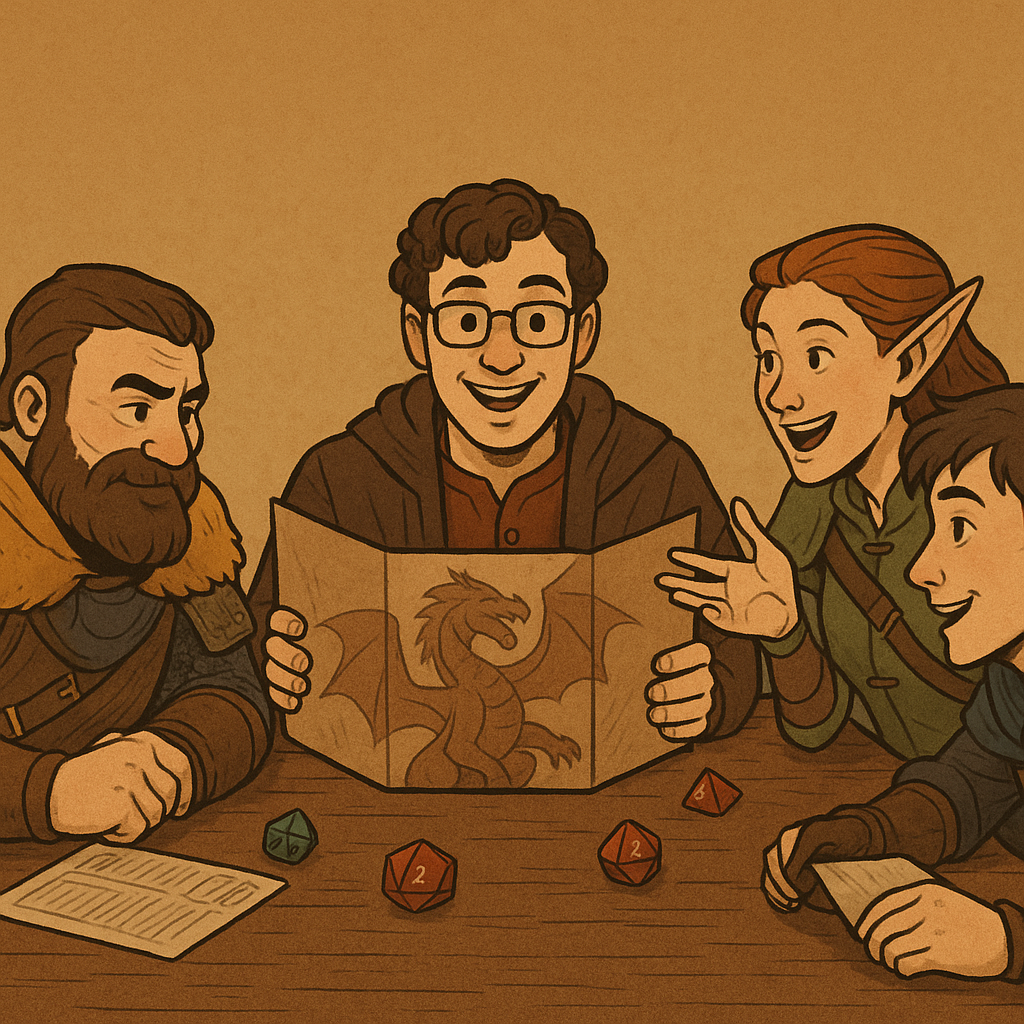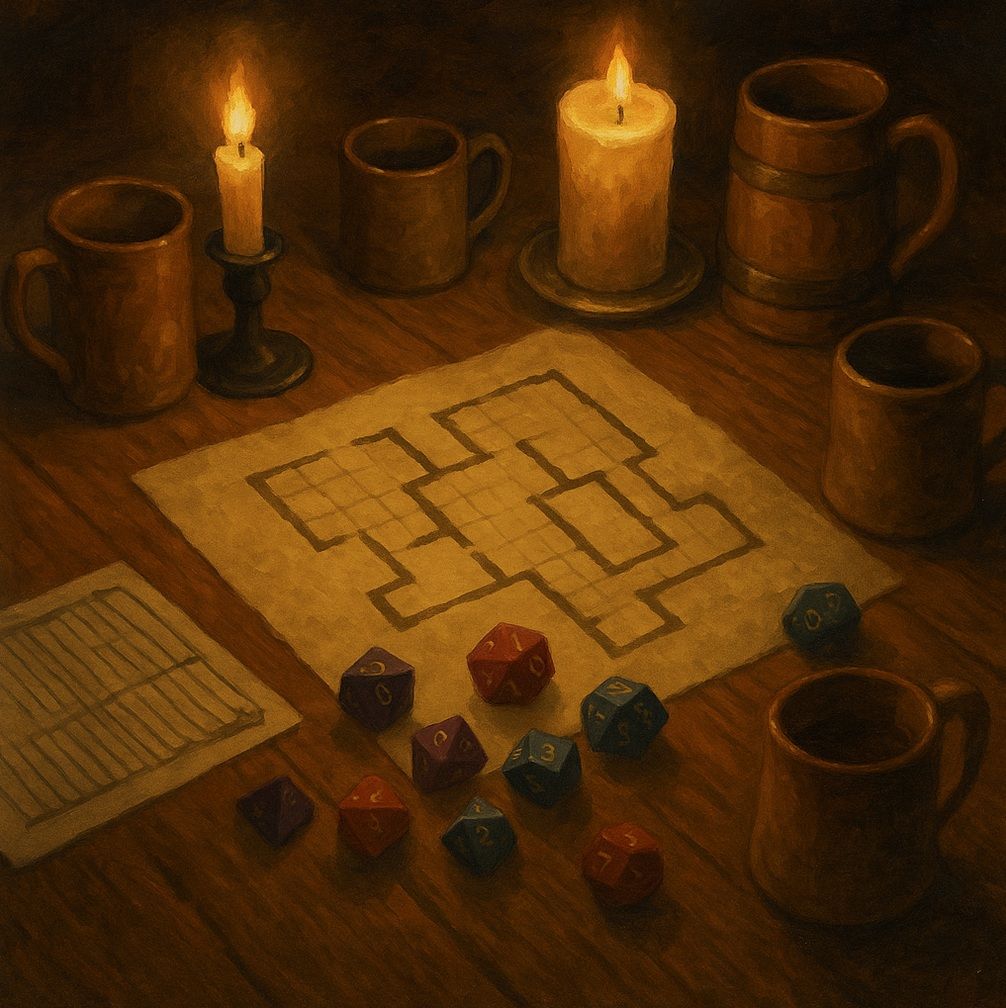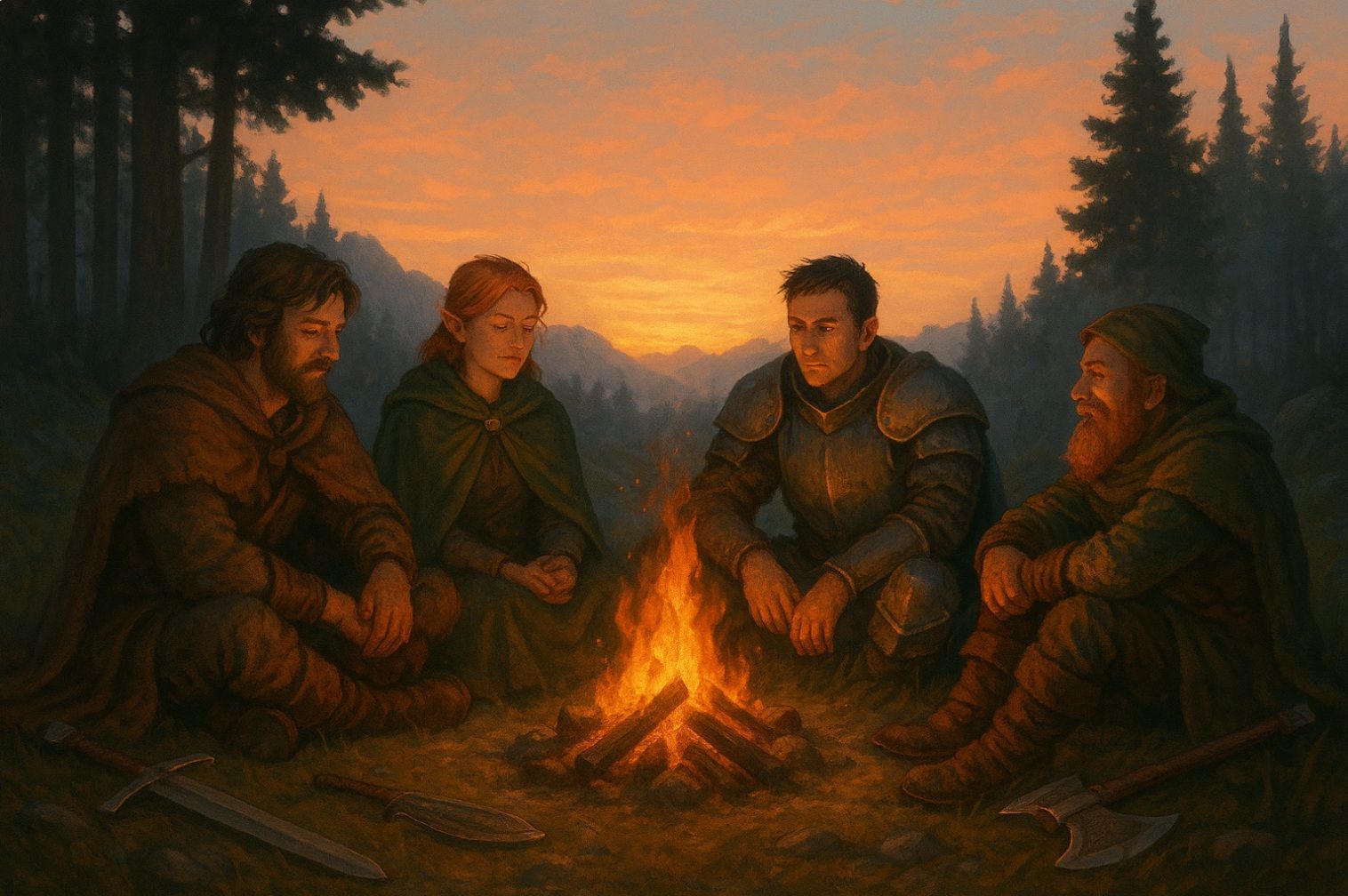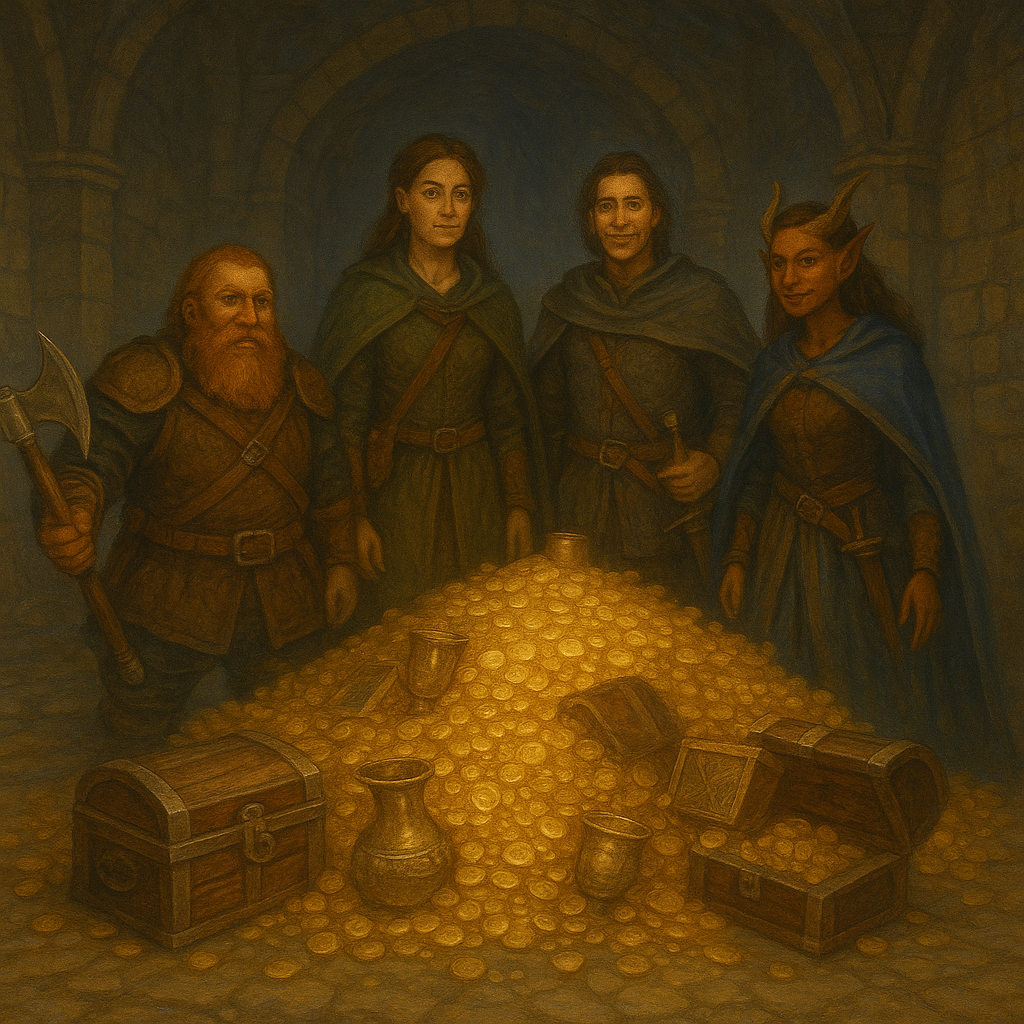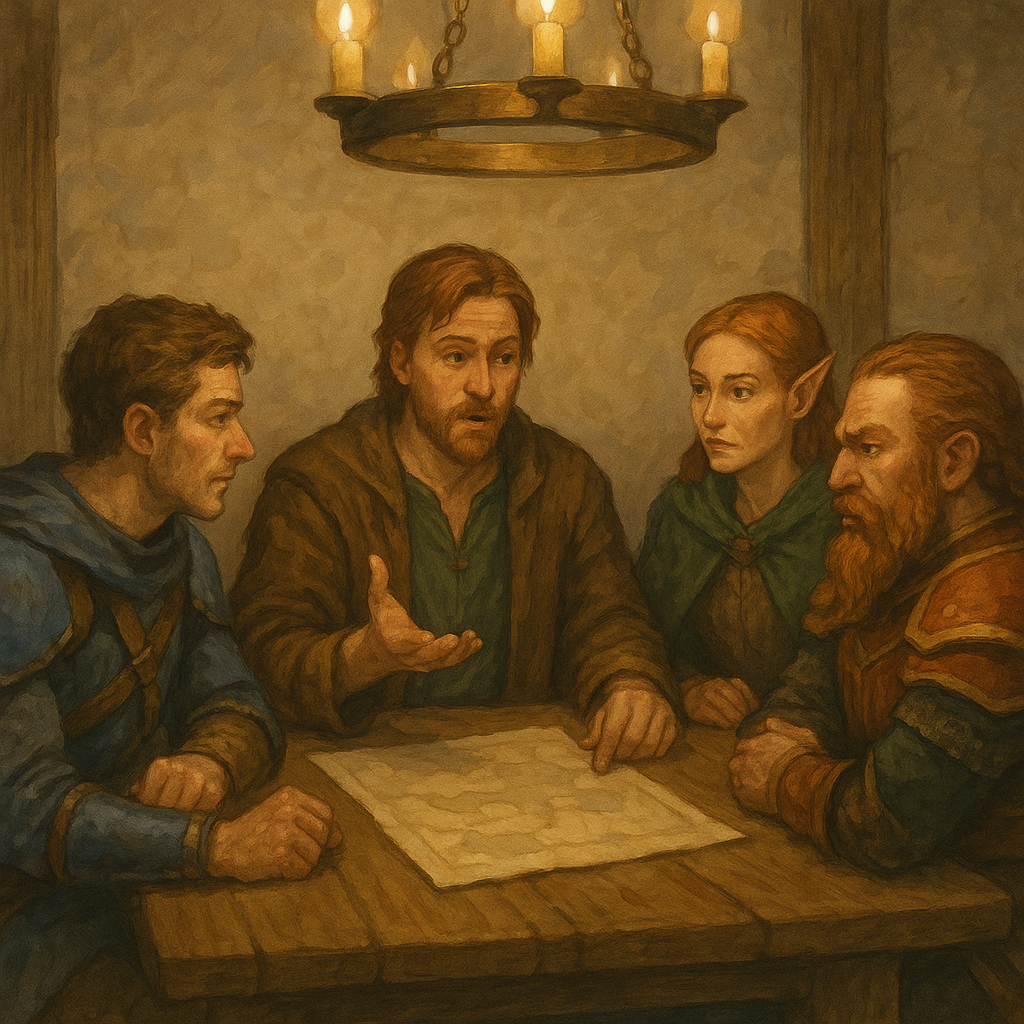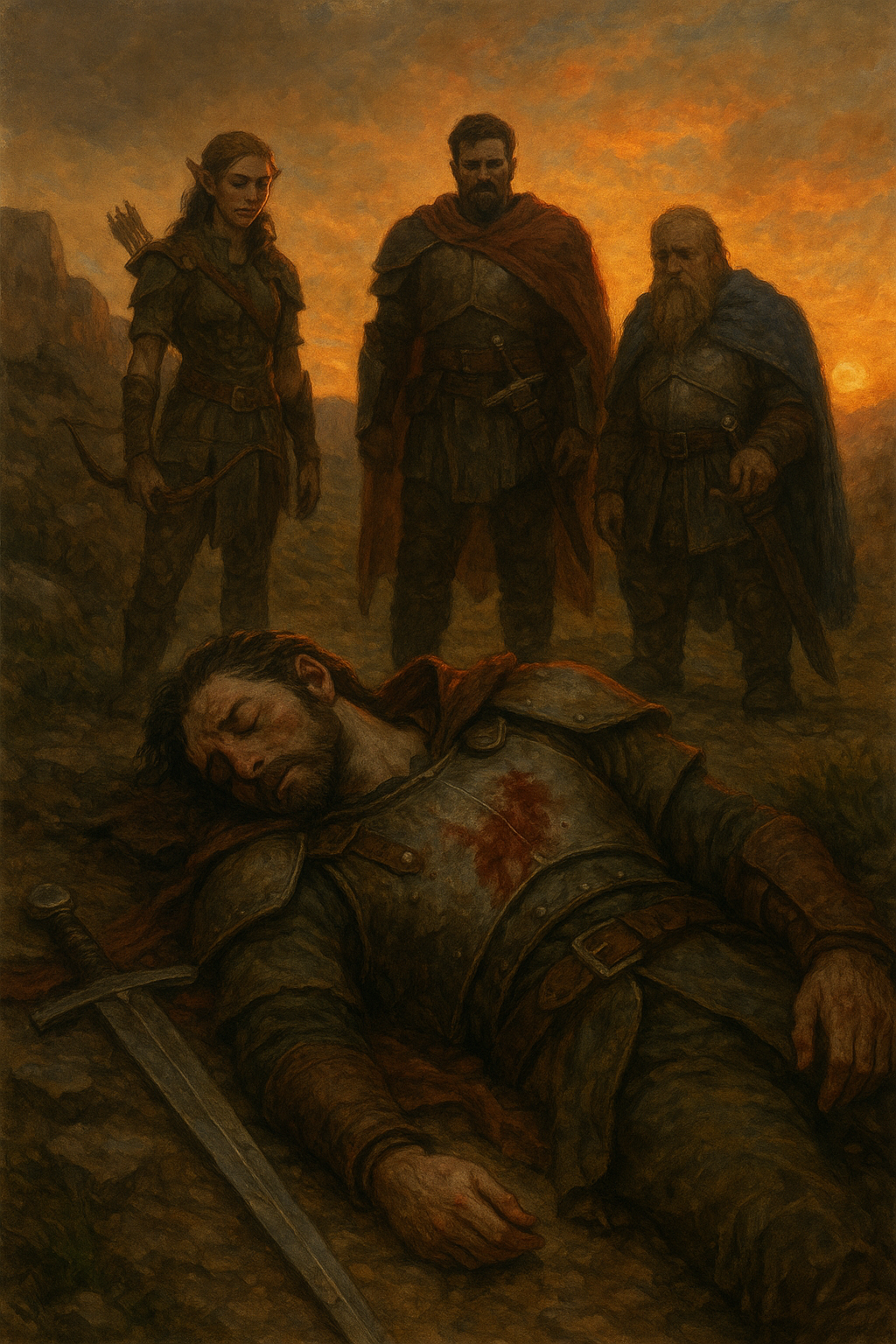Dynamic Dungeons: Incorporating Environmental Hazards in Combat
The "Where" is just as important as the "What" in combat
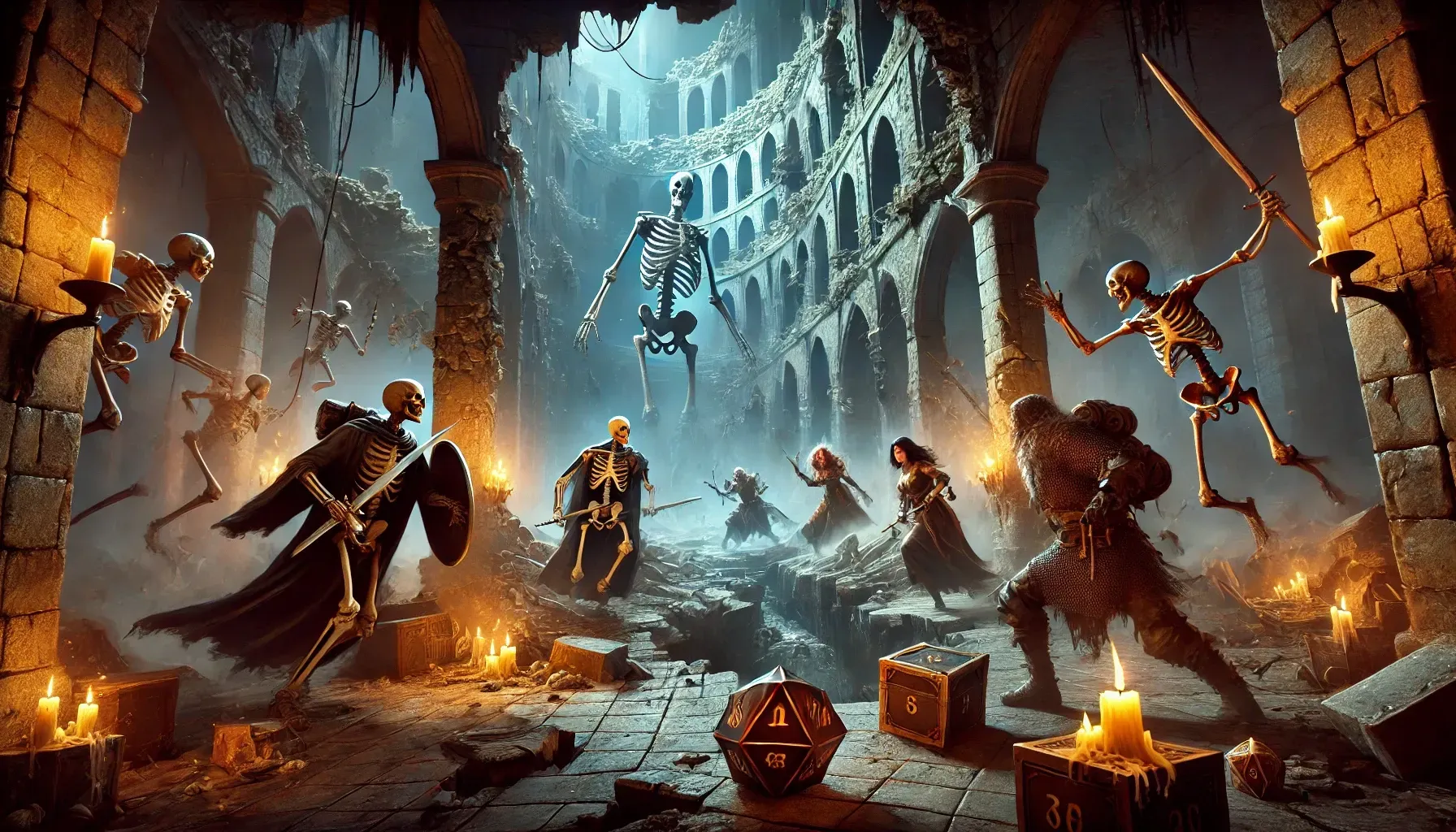
Dear Readers,
Welcome to another thrilling exploration of dungeon mastery, where today, we delve into the art of crafting more dynamic, perilous, and memorable combat encounters. A well-crafted dungeon isn't just a series of rooms filled with monsters and treasure—it's a living, breathing environment brimming with potential hazards that can challenge players in unexpected ways. By incorporating environmental hazards into your combats, you can create encounters that test not only your players' combat skills but also their creativity, teamwork, and adaptability.
Why Environmental Hazards Matter
At its heart, Dungeons & Dragons (D&D) is about storytelling; every story benefits from tension, drama, and surprise. Environmental hazards bring these elements to the forefront, turning what could be a straightforward skirmish into a multi-layered challenge. Imagine fighting a troll on a narrow bridge over a rushing river or battling goblins in a room filling with poison gas. These hazards shift the focus from brute force to problem-solving, forcing players to engage with the environment as much as the enemies.
Moreover, environmental hazards can make encounters feel more immersive. They root your players in the world, reminding them that dungeons are ancient, dangerous places—not just static backdrops. Hazards also give every encounter a unique flavor, helping your campaign stand out and be remembered long after the dice have stopped rolling.
Designing Environmental Hazards
When incorporating hazards, the key is to strike a balance between challenge and fairness. Hazards should be threatening enough to be taken seriously but not so overwhelming that they overshadow the encounter or feel unfair. Below are some considerations for designing effective environmental hazards:
1. Tie Hazards to the Setting
Environmental hazards should feel natural to the dungeon or region in which they’re found. For example:
- A volcanic cave might have pools of lava, falling stalactites, or areas filled with suffocating fumes.
- A frozen tundra might feature thin ice over freezing water, snowdrifts, or sudden avalanches.
- A crumbling ruin could have collapsing floors, unstable walls, or ancient traps still in working order.
2. Make Hazards Interactive
Players love having opportunities to interact with their environment. Design hazards that players can manipulate or use to their advantage:
- A precarious chandelier that can be cut down to crush enemies below.
- Barrels of oil that can be ignited to create a fiery barrier.
- A rickety rope bridge that can be destroyed to hinder pursuing enemies.
3. Use Hazards to Encourage Tactical Play
Environmental hazards can make players think more strategically about movement and positioning:
- Areas of difficult terrain can slow movement and force characters to choose alternative routes.
- Platforms that rise and fall can create verticality, offering new vantage points or risks.
- Hazards like fire or acid can deny certain battlefield areas, herding players or enemies into specific zones.
4. Balance Risk and Reward
- A suitable hazard should offer a mix of danger and opportunity. For example:
- A trap that triggers a rockfall might also reveal a hidden treasure cache.
- A collapsing bridge might force players to choose between a perilous crossing or a time-consuming detour.
- A magical storm might damage everyone in the area but also supercharge spellcasting.
5. Ensure Hazards Are Telegraphed
- Players should have a fair chance to notice and react to hazards. Use descriptive narration to hint at dangers:
- “The ground trembles as if the earth itself is unstable.”
- “A faint green mist seeps from cracks in the walls, stinging your eyes and throat.”
- “The bridge creaks ominously under your weight, and several boards are missing.”
Examples of Environmental Hazards
Let’s explore some common types of hazards and how to implement them effectively in your games.
1. Traps
Classic dungeon fare, traps can range from simple to complex. Some ideas include:
Pressure Plates: Stepping on these triggers darts, spikes, or pits.
Swinging Blades: Activated by tripwires or levers, these blades force players to dodge or disable them.
Magic Runes: Triggered by proximity, these runes might release fireballs, lightning, or curses.
Pro Tip: Combine traps with active combat for heightened tension. For instance, imagine fighting kobolds in a room filled with pressure plates that release arrows when triggered.
2. Terrain Hazards
Difficult terrain or dangerous zones add complexity to movement and positioning:
Lava Pools: Deal fire damage to anyone who falls in or gets too close.
Quicksand: Restricts movement and requires Strength checks to escape.
Icy Surfaces: Force Dexterity saves to avoid slipping and falling prone.
Pro Tip: Use terrain hazards to divide the battlefield, creating opportunities for tactical play and creative solutions.
3. Environmental Effects
Dynamic environmental effects can add urgency and drama to encounters:
Collapsing Ceiling: The room begins to cave in, forcing players to escape while fighting.
Rising Water: The dungeon floods, turning every round into a race against time.
Poison Gas: A spreading cloud of toxic fumes forces players to seek clean air.
Pro Tip: These hazards are particularly effective in multi-phase encounters where the battlefield changes over time.
4. Natural Hazards
These hazards reflect the dangers of the natural world:
Earthquakes: Shake the ground, potentially knocking creatures prone or collapsing tunnels.
Wildfires: Spread unpredictably, forcing constant repositioning.
Lightning Storms: Bolts randomly strike, damaging creatures in exposed areas.
Pro Tip: Pair natural hazards with thematic enemies (e.g., fire elementals in a wildfire) for added immersion.
5. Magical Hazards
Fantasy settings allow for all manner of magical dangers:
Wild Magic Zones: Unpredictable surges of magic cause spells to behave erratically.
Anti-Magic Fields: Suppress all magic within a certain radius.
Cursed Objects: Items that tempt players with power but carry dire consequences.
Pro Tip: Use magical hazards to challenge players’ assumptions and force them to adapt their strategies.
Running Hazards in Combat
Once you’ve designed your hazards, it’s essential to implement them effectively during gameplay. Here are some tips for running hazards in combat:
1. Track Initiative for Hazards
Treat certain hazards as if they have their own initiative count. For example, a rolling boulder might move 30 feet every round, or a lava geyser might erupt at the end of each turn.
2. Encourage Creative Solutions
Reward players for thinking outside the box. If they want to use a hazard to their advantage, let them try! For example, they might:
Push enemies into a pit of acid.
Use a collapsing wall as cover.
Redirect a magical hazard toward an enemy.
3. Adjust Difficulty on the Fly
If a hazard turns out to be too punishing (or too easy), don’t hesitate to adjust it mid-game. For example, you might:
Reduce the damage of a hazard that’s proving too deadly.
Increase the frequency of a hazard that’s not posing a threat.
Add an escape route if players are struggling to find a solution.
4. Keep the Action Flowing
While hazards add complexity, they shouldn’t bog down combat. Be concise in your descriptions and keep the focus on player actions and decisions.
Sample Encounter: The Shifting Sands
To illustrate these principles, here’s a sample encounter featuring dynamic environmental hazards:
Setup
The adventurers enter a vast underground chamber filled with ancient sand. The floor is unstable, shifting underfoot, and scattered with ruins of a long-lost civilization. A group of sand elementals emerges to attack the party.
Hazards
Shifting Sands: Each round, the sands shift unpredictably, creating areas of difficult terrain. Players must make a Dexterity save (DC 13) at the start of their turn or fall prone.
Sandstorms: Every other round, a sandstorm sweeps through the chamber, reducing visibility to 10 feet and imposing disadvantage on ranged attacks.
Collapsing Pillars: Damaging the ancient pillars has a chance to cause them to collapse. When a pillar falls, it deals 3d6 bludgeoning damage in a 10-foot radius, creating a new area of difficult terrain.
Tactics
The sand elementals use the shifting terrain to their advantage, pushing players into areas of difficult terrain or collapsing pillars.
Players can try manipulating the hazards, such as collapsing pillars onto the elementals or using the sandstorm to hide from ranged attacks.
Conclusion
After defeating the elementals, the players discover a hidden treasure buried in the sands—but only if they searched during the fight or sift through the hazardous terrain afterward.
Final Thoughts
Environmental hazards are a powerful tool in any Dungeon Master’s arsenal. They add depth, excitement, and unpredictability to your encounters, challenging players in new and unexpected ways. Whether you’re dropping your players into a volcanic cavern or a crumbling castle, remember to tailor your hazards to the setting, telegraph them effectively, and encourage creative play.
May your dungeons be dynamic, your dice rolls favorable, and your adventures unforgettable!
Until next time, Dear Readers...















